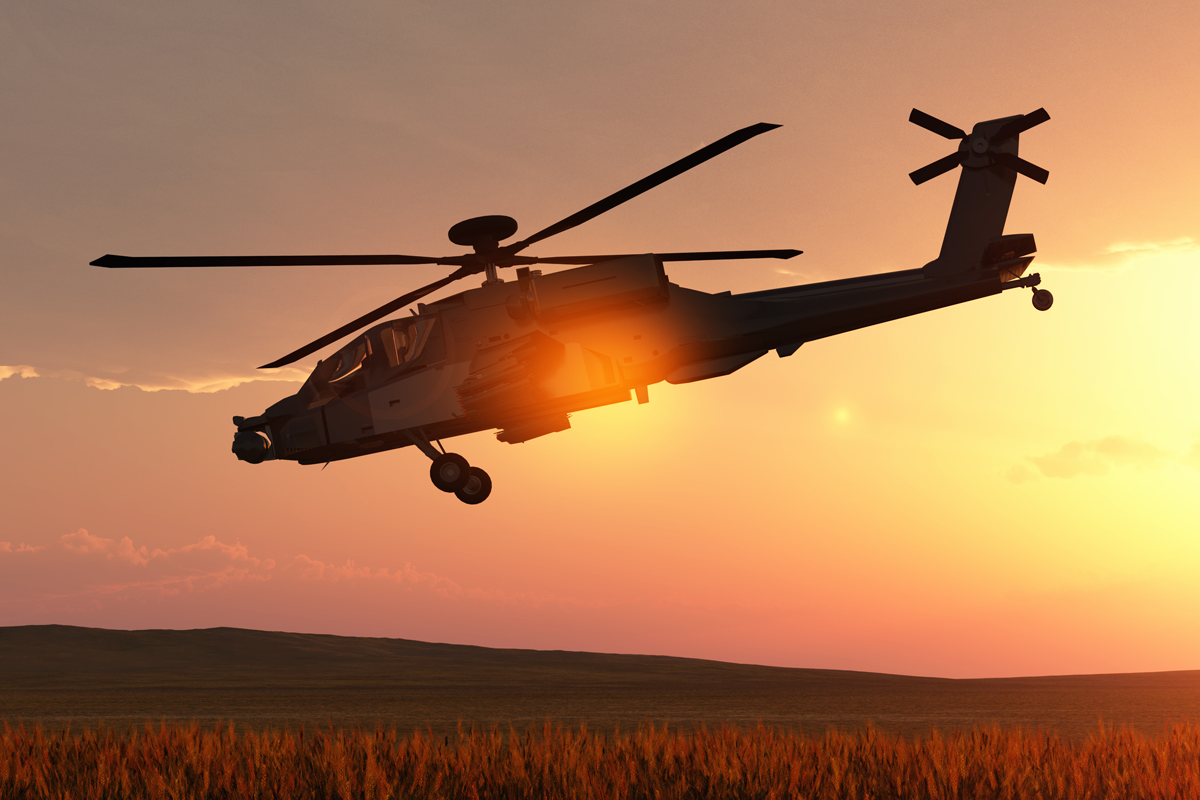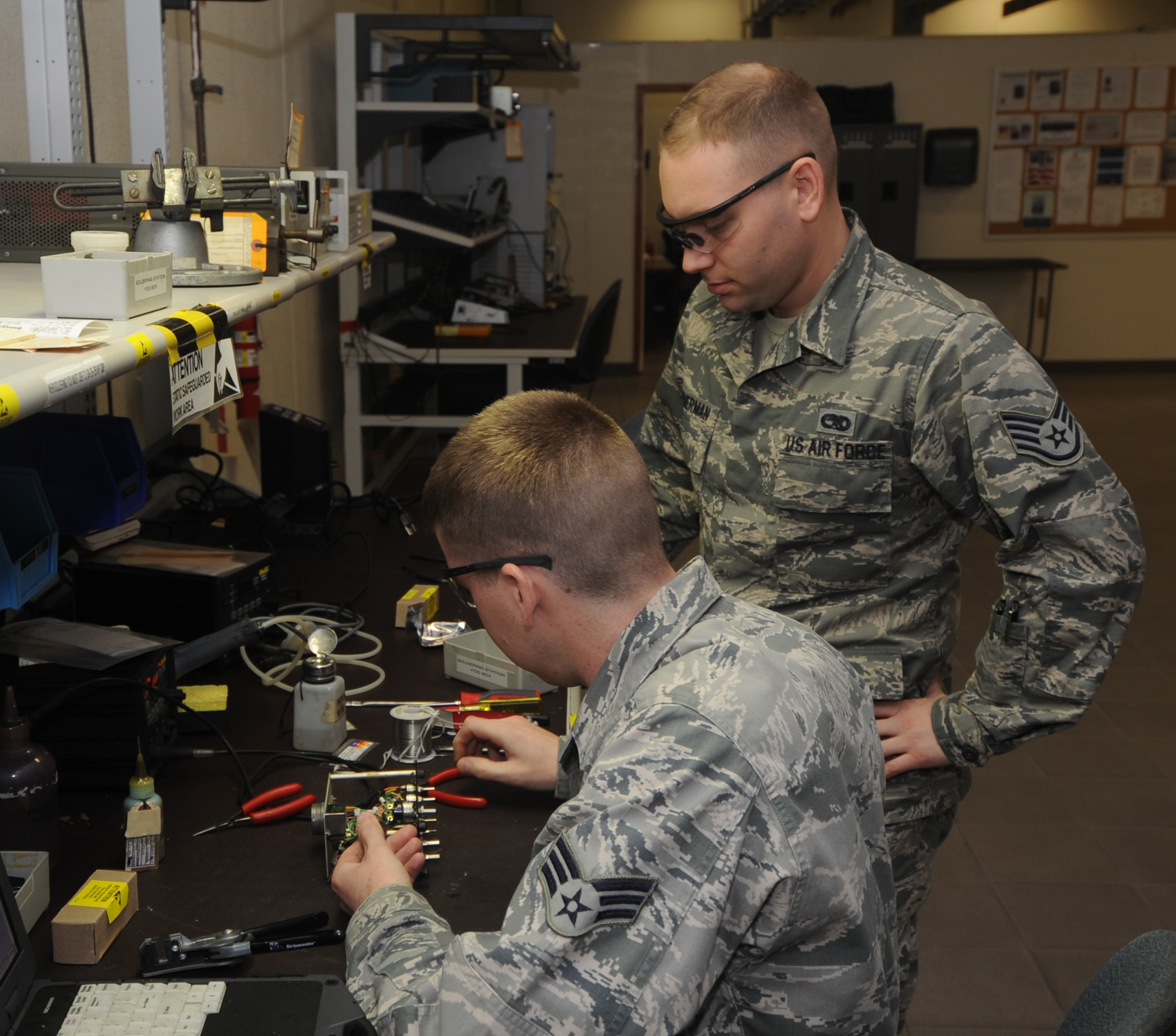Military Avionics - Avionics (bld aviation and electronics) is the electronic system used in aircraft. Avionics systems include communications, navigation, display and management systems, and hundreds of systems that fit the aircraft to perform individual functions. These can be as simple as search lights for a police helicopter or as complex as a tactical system for an airborne early warning platform.
The term "avionics" was coined in 1949 by Philip J. Klass, former editor of Aviation Week & Space Technology magazine as a portmanteau of "aviation electronics".
Military Avionics

The first airborne radio was in a zeppelin, but the military encouraged the development of a lightweight radio set that could be carried by heavier craft, so that two carrier aircraft could report their observations immediately in an emergency. Down. The US Navy tested the first radio transmission from an airplane in August 1910. They were the first airplane radios to transmit by radio telegraph, so they needed a two-seater airplane and a second crew to touch the telegraph key to send the message. with Morse code. . During World War I, two-way AM radio sets were made possible in 1917 with the development of the triode vacuum tube, which was simple enough for pilots in single-seat airplanes to use while flying.
Eyes Up And Out: Advancing Situational Awareness In Helicopter Avionics
Radar, the ctral technology used today in aircraft navigation and air traffic control, was developed by many countries, especially in secret, as an air defense system in the 1930s during the period leading up to the Second World War. Much of modern avionics has its origins in the military developments of World War II. For example, the autopilot system that is common today began as a special system that would allow bombers to fly steadily to hit precise targets from high altitudes.
Britain's decision in 1940 to share radar technology with the US allies, particularly the magnetron vacuum tube, in the famous Tizard mission, contributed greatly to the war.
Modern aviation is an important part of military aircraft. Aircraft such as the retired F-15E and F-14 now account for about 20 percent of their aviation budget. Most modern helicopters now have a 60/40 budget split in favor of avionics.
The cost of avionics has also increased in the civilian market. The flight control system (fly-by-wire) and new navigation requirements arising in the tight airspace increased development costs. A big change is the growing right in consumer aviation. As people began to use airplanes as their primary means of transportation, more sophisticated methods of safely controlling aircraft in these highly restricted airspaces began to emerge.
Global Military Avionics Market 2020 2025
Aeronautics plays a key role in modernization initiatives such as the Federal Aviation Administration's (FAA) Next Generation Air Transport Systems program in the United States and the Single European Aerospace ATM Research (SESAR) initiative in Europe. The Joint Planning and Development Office has planned flight routes in 6 areas:
The Aircraft Electronics Association reported aerospace sales of $1.73 billion for the first three quarters of 2017 in business and commercial aviation, a 4.1% year-over-year improvement: 73.5% from North America, 42.3% reconfiguration and 57.7% reconfiguration on the US schedule. On January 1, 2020 for the ADS-B enforcement method.
The fuselage of the aircraft is the usual location of flight equipment, including control, tracking, communication, navigation, weather and anti-collision systems. Most aircraft power their avionics using a 14- or 28-volt DC electrical system; However, larger and more modern aircraft (such as airliners or military fighter jets) have AC systems operating at 400 Hz, 115 volts AC.

There are several major aerospace manufacturers, including Boeing, Panasonic Avionics Corporation, Honeywell (now owned by Bdix/King), Universal Avionics Systems Corporation, Rockwell Collins (now Collins Aerospace), Thales Group, GE Aviation Systems, Garmin, Raytheon, Parker Hannifin, UTC Aerospace Systems (now Collins Aerospace), Selex ES (now Leonardo SpA), Shadin Avionics, and Avidyne Corporation.
Avionics Upgrades Enhance Situational Awareness For Military Pilots
International standards for avionics equipment are prepared by the Aerospace Electronics Engineering Committee (AEEC) and published by ARINC.
Communication connects the flight deck with the ground and the flight deck with passengers. In-flight communication is provided by public address and the aircraft's intercom system.
VHF aviation communication systems operate in the air band between 118.000 MHz and 136.975 MHz. Each channel is spaced 8.33 kHz from the nearest address in Europe, 25 kHz elsewhere. VHF is also used for line of sight communications such as aircraft to aircraft and aircraft to ATC. Amplitude modulation (AM) is used, and communication is in simplex mode. Air communication can be done using HF (especially for oversea flights) or satellite communication.
Aeronautics is the determination of position and direction in or above the surface of the earth. Spacecraft can use satellite navigation systems (such as GPS and WAAS), inertial navigation systems (INS), ground radio navigation systems (such as VOR or LORAN), or any combination thereof. Some navigation systems such as GPS will automatically calculate the location and display it to the flight crew on a moving map display. Older ground systems such as VOR or LORAN required pilots or navigators to plot the intersection of signals on a paper map to determine the aircraft's position; A modern system automatically calculates the location and displays it to the flight crew on a moving map display.
Astronics Embeds 64 Bit Processing, Ethernet In New Ng Avionics I/o Systems
Airbus A380 glass point with a pull-out keyboard and two wide computer screens for the pilot
The first suggestion of glass cockpits occurred in the 1970s when cathode ray tube (CRT) screens began to replace displays, gauges and electronic instruments. The "glass" cockpit refers to the use of computer monitors instead of gauges and other analog displays. There are more and more aircraft exhibitions, magazines and information that are competing for The secret is to focus on space and pilots. In the 1970s, the average airplane had more than 100 cockpit instruments and controls.
Glass cockpits began to exist with the private jet Gulfstream G-IV in 1985. One of the main challenges of glass cockpits is to balance the amount of automatic control and the amount that the pilot should do manually. They generally try to automate the flight and keep the pilot informed at all times.

The aircraft has an automatic flight mode. The autopilot was first used by Lawrence Sperry during World War I to fly bombers steadily and at a level that would accurately hit targets from 25,000 feet. When the US Army first adopted it, Honeywell engineers sat in the back seat with a bolt cutter to disconnect the autopilot in an emergency. Most commercial aircraft today have flight control systems to reduce pilot error and workload during takeoff and landing.
Us Army Tests Avionics Enhancements For Its Smart Drone
The first simple commercial autopilots were used to control heading and altitude and had limited power over things like thrust and flight control surfaces. In helicopters, automatic stabilization is used in a similar manner. The first system is an electric motor. Safety has been increased due to the advancement of cable and electroactuated (instead of hydraulic traditional) flying surface. Like displays and instruments, important electromechanical equipment has a limited life. With a critical security system, the software is rigorously tested.
The fuel quantity indication system (FQIS) monitors the amount of fuel on board. Using various ssors, such as tube capacitance, temperature ssors, dsitometers & level ssors, the FQIS computer calculates the mass of fuel remaining in the vessel.
The fuel control and monitoring system (FCMS) reports the fuel remaining in the vessel in the same way, but, by controlling the pump & valve, manages the transfer of fuel around the different tanks.
To increase air traffic control, most transport aircraft and very small aircraft use Traffic Alert and Collision Avoidance System (TCAS), which can detect the position of nearby aircraft, and provide advice to avoid mid-level collision. Smaller aircraft may use simpler traffic alert systems such as TPAS, which are passive (do not actively interrogate other aircraft's transmitters) and do not provide conflict resolution advisors.
Rotary Wing Avionics System
To help avoid Controlled Flight Into Terrain (CFIT), aircraft use systems such as the Ground Proximity Warning System (GPWS), which uses a radar rangefinder as an important feature. One of the major weaknesses of GPWS is the lack of "look-ahead" information, as it only provides altitude above the "look-down" terrain. To overcome this weakness, modern aircraft use Terrain Warning System (TAWS).
Commercial cockpit data recorders, also known as "black boxes", store flight data and audio from the cockpit. They are often recovered from aircraft after accidents to determine control settings and other parameters during the incident.
Weather systems such as weather radar (typically Arinc 708 on commercial aircraft) and lightning detectors are important for aircraft flying at night or in meteorological conditions, when pilots cannot see the weather ahead. Heavy rain (as measured by radar) or heavy turbulence (estimated from lightning activity) are indicators of strong wind activity and severe turbulence, and weather systems prompt pilots to travel around these areas.
Lightning detectors such as Stormscope or Strikefinder have become obsolete but are useful for light aircraft. In addition to radar and lightning detection, extended radar observations and images (such as NEXRAD) are available through satellite data links, allowing pilots to see weather conditions far beyond the range of their own flight systems. Modern display allows weather information
Future Focused Army Collaborations Solidify Advances In Aviation
Military drone range, laser range finder military, military range bags, military range targets, long range military radio, military radio range, military range finder, military long range binoculars, range rover military discount, military range rover, range of military drones, military range bag

0 Comments